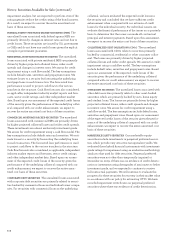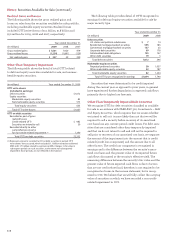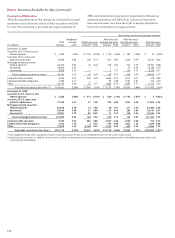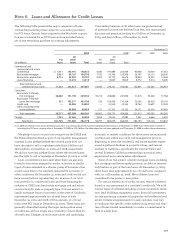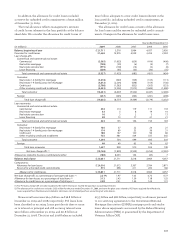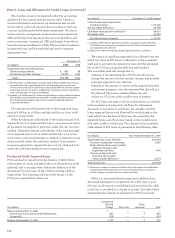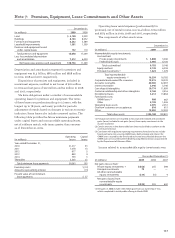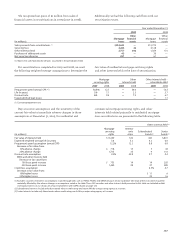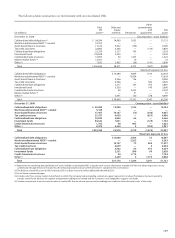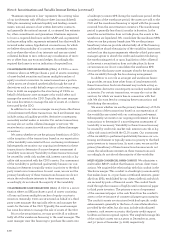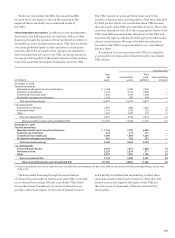Wells Fargo 2009 Annual Report Download - page 126
Download and view the complete annual report
Please find page 126 of the 2009 Wells Fargo annual report below. You can navigate through the pages in the report by either clicking on the pages listed below, or by using the keyword search tool below to find specific information within the annual report.
Note 8: Securitizations and Variable Interest Entities
Involvement with SPEs
In the normal course of business, we enter into various types
of on- and off-balance sheet transactions with special purpose
entities (SPEs), which are corporations, trusts or partnerships
that are established for a limited purpose. Historically, the
majority of SPEs were formed in connection with securitization
transactions. In a securitization transaction, assets from our
balance sheet are transferred to an SPE, which then issues
to investors various forms of interests in those assets and
may also enter into derivative transactions. In a securitization
transaction, we typically receive cash and/or other interests
in an SPE as proceeds for the assets we transfer. Also, in
certain transactions, we may retain the right to service the
transferred receivables and to repurchase those receivables
from the SPE if the outstanding balance of the receivables
falls to a level where the cost exceeds the benefits of servicing
such receivables. In addition, we may purchase the right to
service loans in a SPE that were transferred to the SPE by
a third party.
In connection with our securitization activities, we have
various forms of ongoing involvement with SPEs, which
may include:
• underwriting securities issued by SPEs and subsequently
making markets in those securities;
• providing liquidity facilities to support short-term
obligations of SPEs issued to third party investors;
• providing credit enhancement on securities issued by
SPEs or market value guarantees of assets held by SPEs
through the use of letters of credit, financial guarantees,
credit default swaps and total return swaps;
• entering into other derivative contracts with SPEs;
• holding senior or subordinated interests in SPEs;
• acting as servicer or investment manager for SPEs; and
• providing administrative or trustee services to SPEs.
The SPEs we use are primarily either qualifying SPEs
(QSPEs), which are not consolidated under existing accounting
guidance if the criteria described below are met, or variable
interest entities (VIEs). To qualify as a QSPE, an entity must
be passive and must adhere to significant limitations on the
types of assets and derivative instruments it may own and
the extent of activities and decision making in which it may
engage. For example, a QSPE’s activities are generally limited
to purchasing assets, passing along the cash flows of those
assets to its investors, servicing its assets and, in certain
transactions, issuing liabilities. Among other restrictions
on a QSPE’s activities, a QSPE may not actively manage its
assets through discretionary sales or modifications.
A VIE is an entity that has either a total equity investment
that is insufficient to permit the entity to finance its activities
without additional subordinated financial support or whose
equity investors lack the characteristics of a controlling
financial interest. Under existing accounting guidance,
a VIE is consolidated by its primary beneficiary, which, under
current accounting standards, is the entity that, through its
variable interests, absorbs the majority of a VIE’s variability.
A variable interest is a contractual, ownership or other
interest that changes with changes in the fair value of the
VIE’s net assets.


